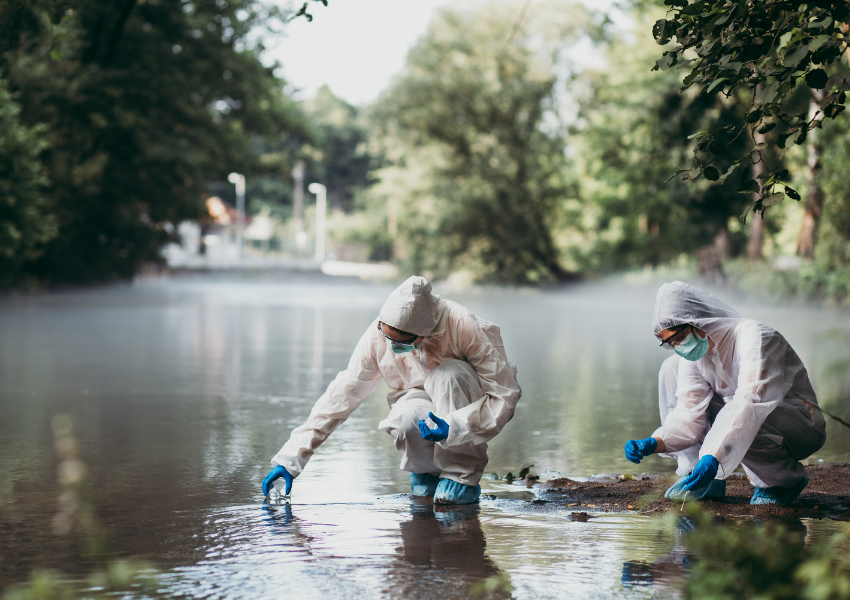An important update is available for FreeStyle LibreLinkØ. Check here for more information.
 Menu
Menu
06 Aug 2019

Marine biodiversity is a fundamental health indicator of our aquatic ecosystems. Understanding the impacts of changes in this biodiversity is fundamental to conservation initiatives and has far reaching consequences on human society as a whole.
High throughput sequencing technologies combined with improved methodologies for environmental DNA extraction (eDNA), has greatly improved our ability to monitor our marine ecosystems over more traditional morphology-based studies of the past.
What is eDNA Extraction?
Environmental DNA is the residual DNA deposited in water by marine species including:
These substances accumulate and gradually dissipate so that any sample gathered from fresh or saltwater sources will contain a unique biological fingerprint that’s representative of recent biological activity and the current marine community. All we need to access this information is a method of eDNA extraction appropriate for the sample’s condition and planned downstream application.
One of the primary challenges of eDNA extraction is dealing with small sample volumes and degraded DNA fragments. This can complicate the detection of specific taxa with a low genomic footprint in the sample. This is solved by using a robust capture—extraction protocol to maximize eDNA yield for subsequent downstream applications. The best protocol for this is to use a dedicated eDNA extraction kit for diverse water samples, like the NucleoMag® DNA/RNA Water Extraction Kit
How is eDNA Extraction Carried Out?
There are a variety of different methodologies out there, but generally speaking, a typical eDNA extraction process from water begins when multiple samples are taken from an aquatic ecosystem with DNA being captured via filtration or precipitation. This may occur in the field or remotely in laboratory facilities following cold-storage or ambient storage in ethanol.
Filtration is preferred for higher sample volumes as the use of ethanol precipitates means less water can be processed at one time. It’s also preferable for its comparative simplicity and versatility, as filter papers are available in a range of different diameters and pore sizes.
When using an eDNA extraction kit, the next step is homogenization of the filtration paper via ceramic bead tubes to facilitate optimal sample lysis. This homogenous solution is then suspended in a transfer lysate and eDNA is extracted by highly-specific binding of nucleic acids using superparamagnetic beads. The extract is washed and eluted to yield a high purity eDNA extract to be used for the desired downstream application.
Among the most common downstream applications are:
Why Conduct eDNA Extractions?
There’s currently a lot of focus within the fields of taxonomy and conservation around metagenomics and eDNA applications. It opens a new window into how we understand the health and diversity of marine ecosystems and taxa of all scales, from microscopic phytoplankton to some of the largest mammals ever to occupy our oceans. There’s a dire scientific consensus regarding the current health of the world’s aquatic environments: without significant change, more than half of the world’s marine species could face extinction by the year 2100. Yet there’s still fierce debate about what needs to change before this catastrophic decline is reversed.
By extracting eDNA from water and examining the biological footprint of a particular aquatic environment we can begin to build a collection of environmental snap shots which allow closer and more precise monitoring of that environment. This is powerful for many reasons. It allows for the monitoring of pollutants and their effects on environments. Species with small populations are able to be studied with greater ease. The presence/absence of rare or invasive species can be detected, the latter of which is of extreme importance to New Zealand’s biosecurity and therefore its economy.
It’s easy to see the benefit of all this information. Not only is it expanding our knowledge of marine life, it is allowing us to formulate our responses to negative or unwanted changes in our aquatic environments, and come up with measures to preserve our biodiversity as best as we can.
About Mediray
Mediray distributes DNA extraction and isolation solutions throughout New Zealand. If you would like more information about eDNA applications, read our previous blog post: Environmental DNA (eDNA) – A World Hidden in a Drop.
Otherwise, contact us if you would like any more information.
References:
If you enjoyed reading our articles, why not sign up to our blog mailing list? You'll get new articles straight to your inbox as they're released!